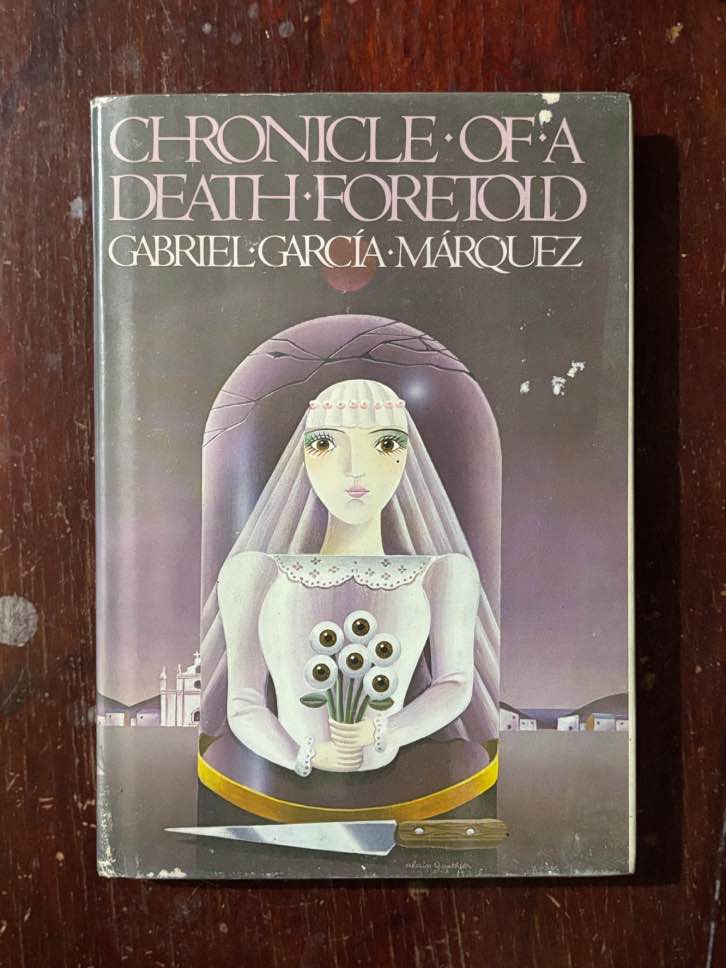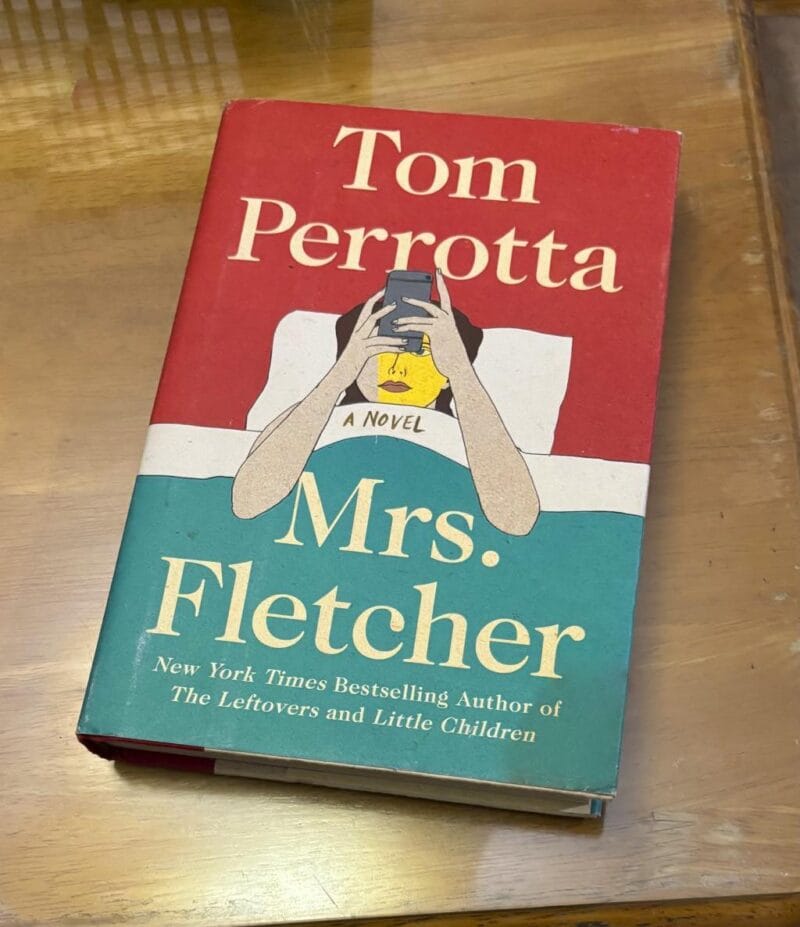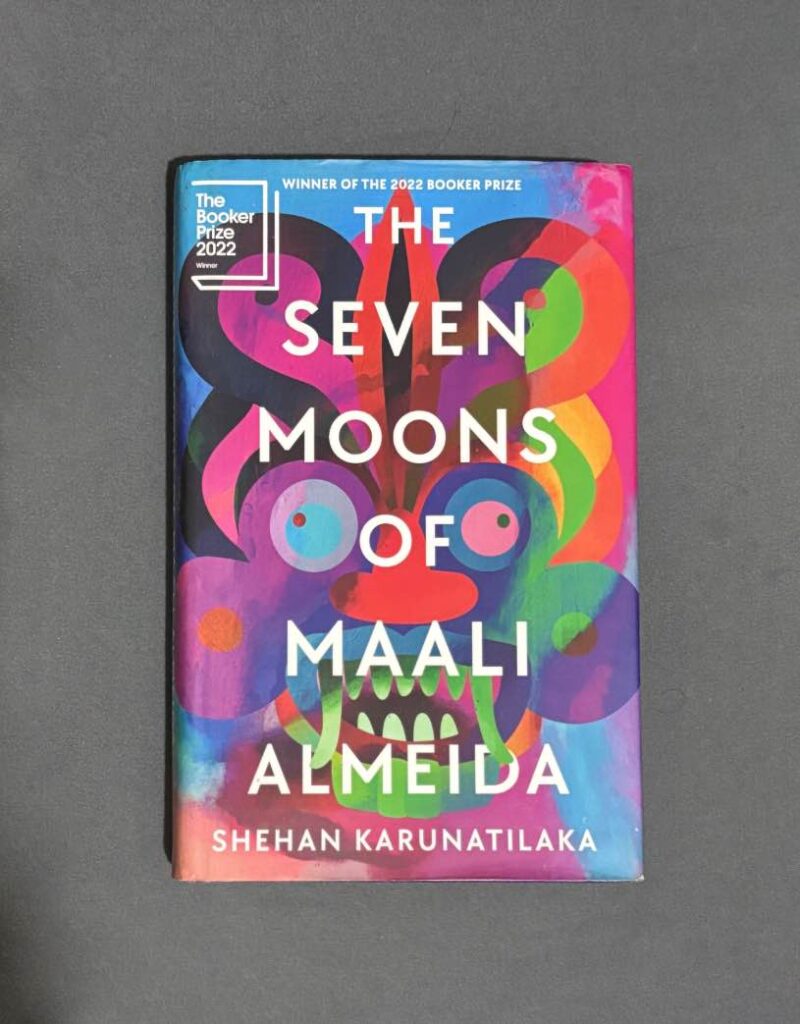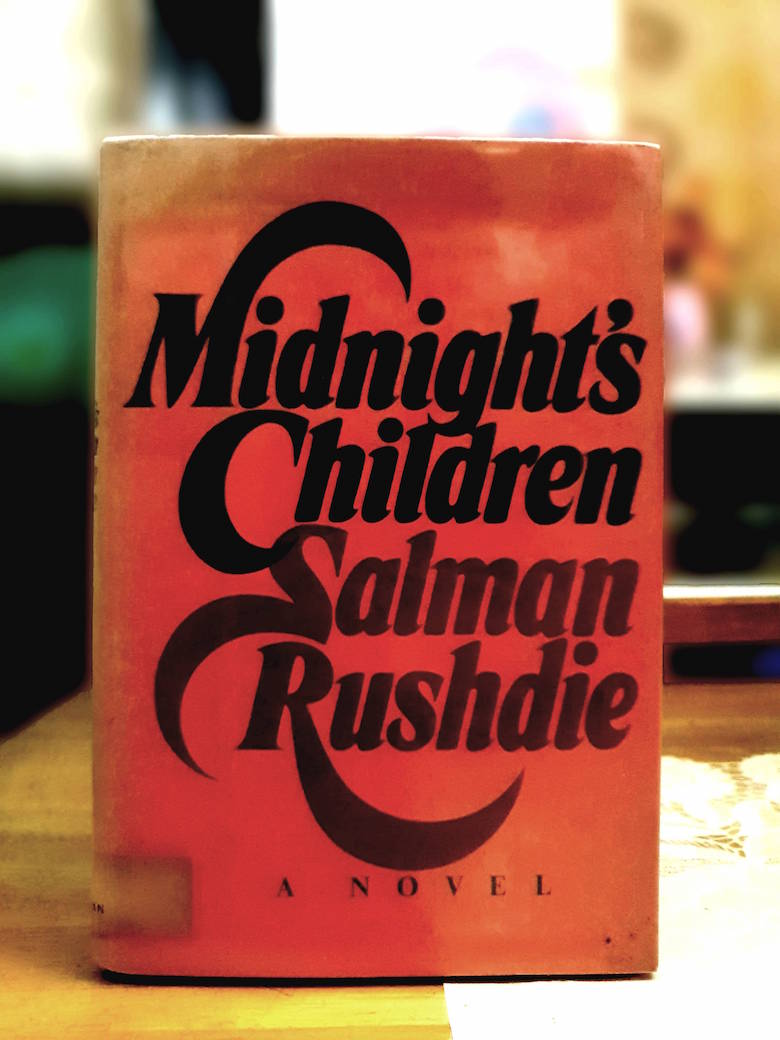Gabriel García Márquez’s novella, Chronicle of a Death Foretold (Spanish: Crónica de una muerte anunciada, 1981), intricately weaves the true story of a murder in a Colombian village with elements of magical realism. Set in a town where a murder is anticipated but seemingly unavoidable, this tale offers a unique narrative technique that merges journalism and fiction—the novella captures the reader’s attention by blending fact and fantasy, pushing the boundaries of traditional storytelling.
This novella’s fascination extends beyond its narrative structure to the deeply rooted cultural aspects it explores. Through the tragic story of Santiago Nasar, García Márquez shines a light on social pressures and the collective responsibility of the community involved in this tragic event. By examining these social dynamics, readers gain insight into the power of public perception and its role in guiding decisions and actions, sometimes to irreversible consequences.
Magical realism, a hallmark of García Márquez’s work, is pivotal in enriching the story’s complexity. Through this literary style, everyday events are imbued with mystical elements that enhance the storytelling, providing a rich backdrop that challenges readers’ understanding of reality. The text is distinguished not only by its plot but also by its ability to evoke deeper questions about human nature and destiny, ensuring its place in the canon of Latin American literature.
Context and Background

García Márquez’s novel is deeply rooted in both the author’s personal history and the socio-political backdrop of Colombia. Understanding García Márquez’s life and the historical context provides insight into the novel’s themes and structure.
Author’s Biography
Gabriel García Márquez was born in 1927 in Aracataca, Colombia. He spent much of his early life under the care of his maternal grandparents, whose stories deeply influenced his literary career. García Márquez’s style, known as magical realism, blends everyday realities with fantastical elements, reflecting the unique cultural milieu of Latin America.
He achieved international acclaim in 1967 with One Hundred Years of Solitude, a novel that established him as a leading figure in modern literature. Over his life, he received numerous awards, including the Nobel Prize in Literature in 1982. His works often address political and social issues, informed by his experiences in a turbulent Colombia.
Historical and Cultural Setting
Chronicle of a Death Foretold is set in a small Colombian town, similar to Sucre, during a period marked by political unrest and traditional values. The novel’s setting reflects the social environment of mid-20th century Colombia, where honor and social status were significant cultural elements.
García Márquez’s portrayal of life in Latin America highlights the region’s complexities, with characters navigating a world where tradition often conflicts with modernity. This historical context is crucial for readers to grasp the motivations behind the characters’ actions and the societal pressures they face. The narrative captures a microcosm of Colombian life, offering a vivid picture of its historical and cultural fabric.
Plot and Characters

Chronicle of a Death Foretold intricately unfolds the events leading to the murder of Santiago Nasar, highlighting key characters and relationships. It explores the cultural and personal motivations behind the tragic event.
Synopsis
The story is set in a small Latin American town where Santiago Nasar is murdered the morning after Angela Vicario’s wedding. The narrative alternates between past and present, constructing a complex timeline. Santiago is accused of dishonoring Angela by taking her virginity, a reason for the Vicario twins to avenge the family’s name. The novella opens with Santiago’s murder already announced, an exploration of the collective memory and shared responsibility of the townspeople unfolds as the story progresses.
Main Characters
Santiago Nasar: The protagonist, a young man of Arab descent, is charismatic and wealthily connected. He becomes unwittingly involved in a cycle of honor that ends in his death. Despite the impending tragedy, Santiago is unaware of the plot against him.
Angela Vicario: The woman at the heart of the scandal, Angela names Santiago as the man who deflowered her. Her actions and the societal pressures she faces are pivotal to the narrative.
Vicario Twins (Pedro and Pablo): The brothers tasked with avenging their sister’s honor. Despite numerous opportunities for the townspeople to intervene, they carry out the murder, driven by tradition and obligation.
Supporting Characters
Bayardo San Román: Angela’s wealthy and charming suitor, later husband, who returns her to her family upon discovering her lack of virginity. His actions set the subsequent events in motion.
Placida Linero: Santiago’s mother, who misinterprets ominous omens and fails to prevent her son’s death. She represents familial loyalty and maternal instincts clouded by love.
Victoria Guzman and Divina Flor: The Nasars’ cook and her daughter. They possess key knowledge but are unable or unwilling to prevent the tragedy.
Flora Miguel: Santiago’s fiancée, who reacts with jealousy and confusion to the accusations, adding another layer to the personal tumult.
Ibrahim Nasar: Santiago’s father, whose past actions and influence shape Santiago’s life and expectations within the town.
Themes and Analysis
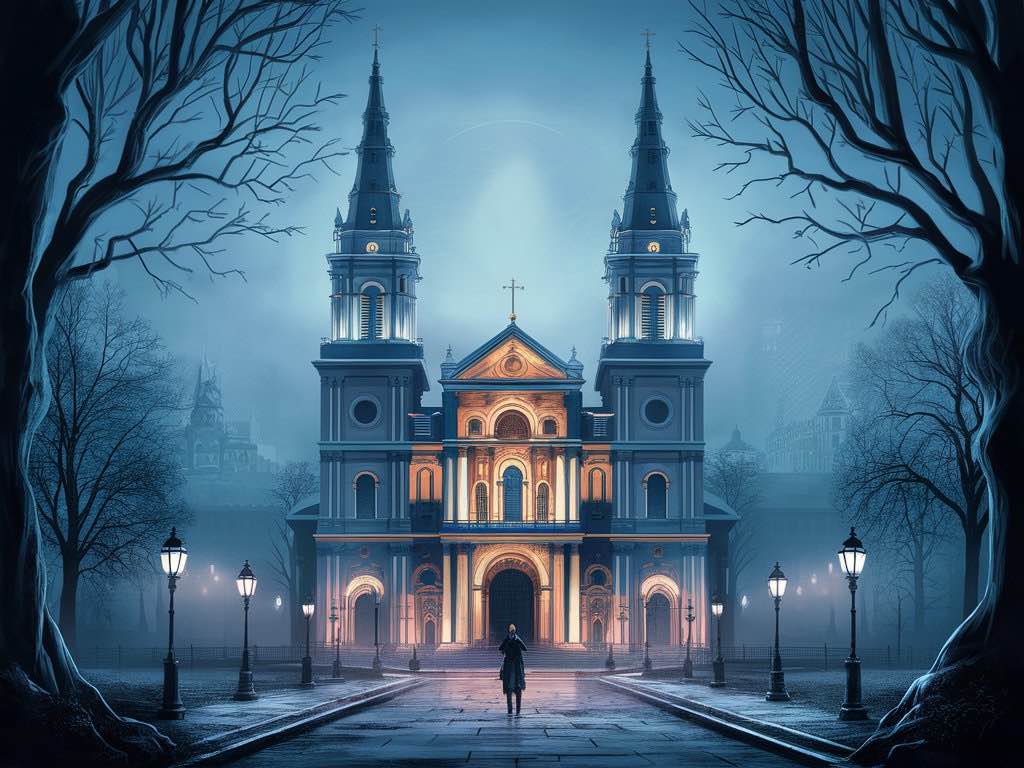
The novel explores complex themes through its narrative structure, underscoring cultural elements rooted in honor, love, and destiny. These themes are woven through the characters’ interactions and societal expectations, often rendering personal and moral consequences.
Honor and Morality
In the novel, honor dictates the actions of individuals and the community. Santiago Nasar’s murder is justified by the Vicario brothers as necessary to restore their sister Angela’s honor, stained by her claimed premarital affair.
The obligation to maintain honor supersedes moral codes, illustrating how entrenched values can drive violence and limit free will. García Márquez paints a society where rumor influences reality, leading to tragic inevitabilities.
Virginity is another facet tied to honor—Angela’s return after her wedding night highlights societal pressures and the severe repercussions of perceived dishonor.
Love and Marriage
Love in the story often revolves around socially constructed expectations rather than genuine affection. Bayardo San Román’s decision to marry Angela Vicario arises from superficial attraction rather than an emotional bond. This relationship sets a backdrop where marriage is viewed as a transaction that enforces traditional roles rather than mutual respect or love.
The unraveling of their union after the wedding night exposes the fragility of marriages built on appearances. Characters navigate misunderstandings and misplaced priorities, revealing complexities within relationships, particularly when faced with communal standards and personal desires.
Fate and Free Will
The narrative blurs the lines between fate and free will, emphasizing the inescapable nature of Santiago’s murder. The death foretold is known by the villagers, yet their inaction questions whether destiny is predetermined or shaped by choice. The community’s passivity suggests a fatalistic acceptance of Santiago’s impending doom.
Despite opportunities to avert the crime, the combination of communal indecision and a rigid adherence to tradition seals his fate. The novel examines whether characters are truly autonomous or merely actors following a script dictated by cultural imperatives and entrenched beliefs.
Literary Style and Structure
Chronicle of a Death Foretold is remarkable for its innovative use of narrative techniques, blending elements of magical realism with a journalistic approach—elements that create a layered storytelling experience that enhances the themes of fate and truth.
Narrative Technique
The narrative technique of the novel is nonlinear, intricately weaving the storyline through a fragmented structure. Events are presented through a series of flashbacks, which are not organized chronologically.
This method allows the exploration of the subjective nature of truth as the story unfolds through different perspectives. The first-person narrative adds complexity as the narrator pieces together the events, encouraging readers to engage actively in understanding the sequence and significance of incidents leading to Santiago Nasar’s foretold death.
Use of Magical Realism
Magical realism is a hallmark of García Márquez’s writing, and Chronicle of a Death Foretold is no exception. The blending of realistic events with surreal elements provides a unique way to examine cultural and communal beliefs. This blending is subtle yet effective, allowing the fantastic to coexist with the mundane.
The presence of omens and dreams in the novel underscores the mystical dimension of everyday life, challenging the boundaries of reality and imagination. Through the intertwining of the supernatural and real, García Márquez enhances the mystery surrounding the murder and the events leading up to it.
Journalistic Approach
The novel employs a journalistic approach, drawing from García Márquez’s experiences in journalism. This is evident in the meticulous detail and factual presentation of events. Investigative techniques, like interviews, play a crucial role in constructing the narrative.
The prose mimics a factual report, providing an account of the murder from multiple sources. This approach heightens the suspense, as bits of information are revealed piece by piece, yet leaves the reader questioning the objectivity of perception and memory. The combination of fact and fiction challenges the reader to discern the truth within the narrative’s complex layers.
Selected Passage with Analysis
On the day they were going to kill him, Santiago Nasar got up at five-thirty in the morning to wait for the boat the bishop was coming on. He’d dreamed he was going through a grove of timber trees where a gentle drizzle was falling, and for an instant he was happy in his dream, but when he awoke he felt completely spattered with bird shit. “He was always dreaming about trees,” Plácida Linero, his mother, told me twenty-seven years later, recalling the details of that distressing Monday. “The week before, he’d dreamed that he was alone in a tinfoil airplane and flying through the almond trees without bumping into anything,” she said to me. She had a well-earned reputation as an accurate interpreter of other people’s dreams, provided they were told her before eating, but she hadn’t noticed any ominous augury in those two dreams of her son’s, or in the other dreams of trees he’d described to her on the mornings preceding his death.
Opening paragraph, Chronicle of a Death Foretold by Gabriel García Márquez
In the book's opening paragraph, Gabriel García Márquez uses Santiago Nasar’s dreams to foreshadow his tragic end and highlight the themes of fate, forewarning, and the blurry line between dreams and reality. Santiago's dream symbolizes the stark contrast between the brief moments of peace in his subconscious and the grim reality awaiting him. Trees, frequently appearing in his dreams, symbolize life and growth but also carry an ominous undertone, suggesting his unconscious awareness of the impending danger.
Plácida Linero, Santiago’s mother and a skilled dream interpreter, fails to detect any threat in her son’s dreams, reinforcing the irony that despite the clear signs, the townspeople — including his family — remain blind to his doomed fate. This inability to interpret these warnings aligns with the novel’s theme of inescapable destiny. The passage also underscores the intersection between dreams and reality, contributing to the novel’s magical realism. Overall, this scene sets a tone of fatalism and inevitability, where warnings are overlooked, and fate appears unchangeable, establishing the foundation for the tragic events to unfold.
Further Reading
Death a Chronicle of Foretold: An Analysis of the Jumbled Timeline of Marquez’s Novel by Burton, Medium
An Ultimate Guide to Chronicle of a Death Foretold by Lindsey’s VCE Tutoring
Chronicle of a Death Foretold Study Guide by LitCharts
I read ‘Chronicle of a Death Foretold’ by Gabriel García Márquez on Reddit
